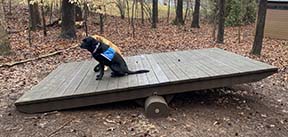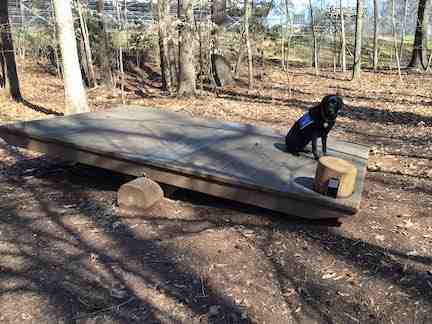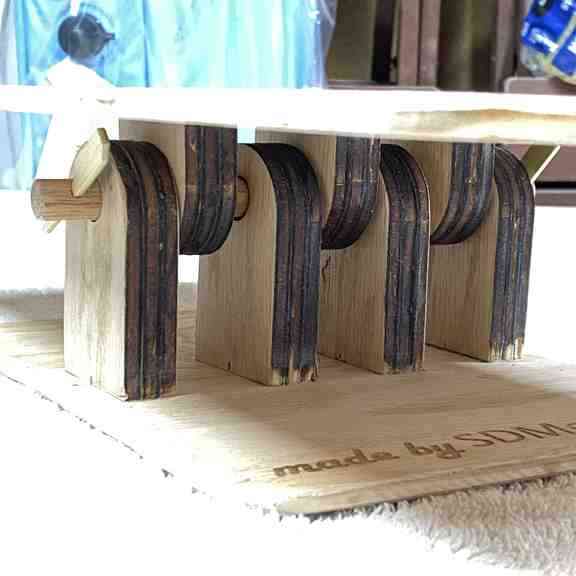Final Project - Whale Watch Sensor¶
During my career, as an outdoor adventure trip leader, I have taken many students rock climbing, caving, kayaking, and backpacking. I have always encouraged participants to leave those annoying portable electronic games, music devices, and certainly cell phones behind. The intention was to encourage the participants to fully embrace (and hopefully enjoy) the trip’s experience without petty technological distractions. Over the past 15 years, also as a challenge course facilitator (a.k.a. ropes course - team building instructor) I would again encourage participants to leave electronics behind, come into the woods for a few hours, and engage fully with fellow participants and the activities.
Lately I have had a slight mind shift in my thought process of “anti-technology” during team building programs. Perhaps it is my acceptance of the new generation of youth needing “electronic” comfort. Their desire to see some sort of technology wherever they are or in whatever they are doing seems hard to ignore. So now I am exploring how to incorporate some technology into challenge course activities.
It is my intention to start with the the “Whale Watch” element of a challenge course. Imagine on a playground, probably an older generation of a playground, that would have a seesaw type activity where two kids, each sitting on the end of a long board that is attached to a pivot point in the middle.

One child rocks up while the other returns down. Up and down alternating. Now imagine a similar concept for a group team building challenge course. That one long board, expanded to allow a group of 12 to 20 participants on an oversized platform called the “Whale Watch.” Like the seesaw, it goes up and down as well. A first level challenge offered to a group would be, for them to try get everyone on the platform while maintaining a balance.


What I am looking to create is several parts to make the whole. First is a “drag racing strip of lights” or another description could be a “light bar” that will sense the whale watch tipping using a 3 axis accelerometer. Because of uneven ground, one side of the platform having touched the ground may actually result in just one corner touching the ground and not the other. Looking at the picture below, Natalia my service pup and a log has caused the platform to tip however zooming in, it looks as if the corner is not yet touching the ground. It is on the other side.

This being the same with a group, that they may not realize the platform has actually touched the ground. So the light bar would allow them to visually see that they have indeed touched the ground or the angle of the platform has been at a position that indicates the activity has touched the ground thus meaning the activity has (temporarily) failed.
The “light bar” may be built to be a collapsible set up that is NOT attached or resting on the Whale Watch platform. Kind of like a sheet music stand to be built with weekly FAB lab assignments.
I have explored other sensors listed below. However Dr. Harris and I think that the accelerometer may be the best viable solution that allows not yet thought of possiblities of technical options to expand the orgininal project idea.
Sketch Idea of Whale Watch Light bar¶
Whale Watch Sensor




Other 3 Axis Accelerometer possiblities:¶
The accelerometer may offer some other opportunities to be built into the whole electronics:
-
light bar sensor indictor (as previously mentioned)
-
include a buzzer that sounds off if the last set of lights on one side or the other is on
-
include a program that will allow the angle of the accelerometer to be calibrated so the equipment could be used at multiple locations.
-
a tracking counter to record number of times each side of the platform “hits” the ground.
First learning about the 3 Axis Accelerometer:¶
-
“The 3 axis accelerometer board detects change in the x,y and z planes. It has triaxial accelerometers that measure the vibration in three axes X, Y and Z. It has three crystals positioned so that each one reacts to vibration in a different axis. The output has three signals, each representing the vibration for one of the three axes.”
The two things that popped into my mind during the video is, there was a neat “bubble level” mode that maybe could be displayed on an iPad. Is there a “one axis accelerometer” or is that what the Tilt Sensor is?
Is the Bluetooth feature needed as in… more than I can handle?
Mini Whale Watch¶
From week 3, Computer Aided Design Week and Week 4, Computer Controlled Cutting, I decided to create a mini Whale Watch. This is so as I explore using and make tweaks using a 3 axis accelerometer I can test on the mini Whale Watch. This allows me not to be depended on weather nor do not have to jog across campus to test theories and collect data using the real one.



Materials¶
| Qty | Description | Price | Link | Notes |
|---|---|---|---|---|
| 1 | Mini Whale Watch | no cost | used scrap wood | |
| 1 | 3 axis accelerometer | $ 8.51 | Amazon Link | |
| 1 | Adafruit NeoPixel LED | $ 19.95 | Amazon Link | |
| 1 | Material three | 22.00 $ | http://amazon.com/test |
Other Possible Sensors¶
-
- Flight of Time Sensor
-
- Ultrasonic Sensor
-
- Infrared Sensor
-
- Hall Effect Sensor (magnetic sensor)
-
- Reed Switch (magnetic switch)
-
- Tilt Sensor
1. Flight of Time Sensor¶
-
Uses laser light to measure distance and bounce data back triggering alerts.
-
Circuit board is about a quarter (in USA money) size
-
Distance can be limited depending on which model A model looked at was 1000mm for max distance which is 39 inches. What is max / peak height of Latin’s whale watch?
-
How might to attach it to whale watch to its removeable when not in use??
-
Could Flight of Time be set up with a audiable alarm?? Visual indicator??
-
Would a row of lights on the circuit box for, a series of lights each side of the whale watch, indicating the closeness of the ground be counted as an “interphase” connection??
-
How difficult and how long would it take to calibrate it before using it??
-
What kind of power source is needed??
-
YouTube video’s exploring using a “Flight of Time” sensor instead of a Force Pressure Sensor
Discovered the Flight of Time is effected by ambiant lighting like many indoor drones so this type of sensor may not be good for outdoors. Unless I was to go to the extent of creating a box to block out outdoor light. Eh.
2. Ultrasonic Sensor¶
-
Uses laser light to measure distance and bounce data back triggering alerts.
-
Circuit board is about a quarter (in USA money) size
-
Distance can be limited depending on which model A model looked at was 1000mm for max distance which is 39 inches.
-
YouTube Video using Ultrasonic Sensor with Buzzer and LED lights
3. Infrared Sensor¶
It seems that Infrared Sensors are also effected by outdoor ambient lighting so not going any further this this idea.
4. Hall Effect Sensor¶
Seems that the Hall Effect Sensor uses Magnets to set off the sensor. It does not have to be a direct magnet to sensor to trigger the sensor. Depending on coding sensor can triggered as the magnet approaches. Could this work on whalewatch with sensor attached to platform and magnets attached to a board on the ground?
5. Reed Switch¶
The Reed Switch, like the Hall Effect is triggered using magnets. Several video’s seem to indicate that the Reed Switch may get stuck on triggered mode and keep the LED or buzzer going. In the YouTube provided, there is a comparison of the Reed Switch and the Hall Effect Sensor and you see that stuck issue.
6. Tilt Sensor¶
Lots of video’s to watch for Tilt Sensor. At first I was thinking it was not possible as just a simple shake or tilt of the board triggered the sensor activating the LED. However in the video provided, with coding the author was able to almost rotate the Breadboard upside down to activate the sensor and LED.
Need to further explore.